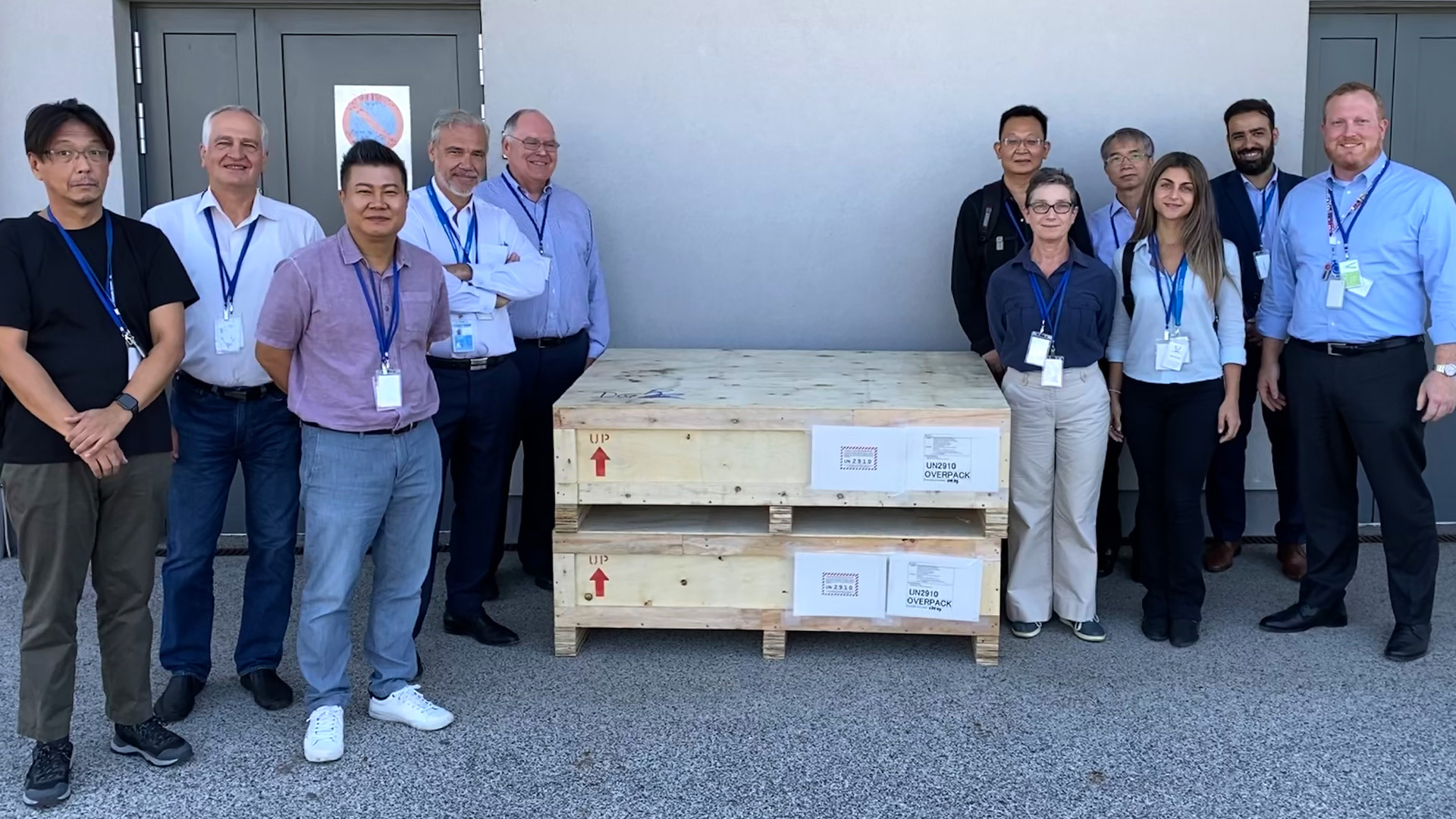IAEA laboratories provide comprehensive analysis
Three of the four IAEA laboratories involved are environmental labs: the Isotope Hydrology Laboratory in Vienna; the Terrestrial Environmental Radiochemistry Laboratory in Seibersdorf, 35 kilometres south of Vienna; and the Radiometrics Laboratory in Monaco. The other laboratory is the Radiation Safety Technical Services Laboratory in Vienna.
From 29 August to 2 September, the Task Force met in Vienna and travelled to Seibersdorf and Monaco to visit all four laboratories. They discussed the analytical techniques to assess the radionuclide content of the samples, the timeline for the work and future analyses for additional samples.
IAEA experts briefed the Task Force on preparations to conduct the analysis of more than 30 different radioisotopes in each water sample with the support of advanced instrumentation. The experts explained the differences in how each radioisotope is measured and how samples are prepared. Joint development work at the laboratories combined with individual separate analysis will ensure best possible results even for challenging analyses of otherwise uncommon radionuclides. “The IAEA laboratories are working together to ensure a comprehensive scientific analysis and to corroborate the data from TEPCO. We are working hard to ensure these initial results can be provided to the international community prior to the start of the water discharge in 2023,” Caruso said.
The Task Force also discussed methods and preparations for the corroboration of the occupational radiation protection capabilities of TEPCO and the Fukushima Daiichi Nuclear Power Station. The proposed technical review and assessment are based on the requirements for assessment of occupational exposure specified in General Safety Guide No. GSG-7.
Earlier this year, the IAEA facilitated two sampling campaigns of treated water from Fukushima Daiichi for analysis by the Agency and third-party laboratories. Additional sampling campaigns from Fukushima Daiichi and the surrounding marine environment are planned over the coming months and years. The IAEA conducts regular performance tests for about 500 laboratories measuring radionuclides in the environment each year, which serve as scientific baselines for assessing the quality and capabilities of participating laboratories.

